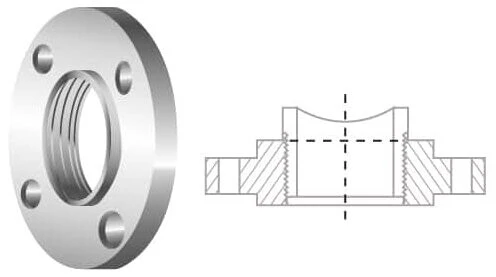Stainless Steel Flange Installation and Maintenance Guide
In pipeline connections, stainless steel flanges serve as vital components, particularly in environments demanding high corrosion resistance and substantial pressure handling. While inheriting traits like corrosion resistance and robust rigidity, stainless steel flanges necessitate proper maintenance for prolonged service life. This article provides detailed insights into installation precautions and daily maintenance methods for stainless steel flanges, addressing the imperative question of how to effectively maintain them.

Installation Precautions
Before installing stainless steel flanges, it's paramount to adhere to correct installation procedures. Here are the key precautions to consider:
1. Surface Cleanliness: Prior to installation, ensure that flange surfaces are impeccably smooth and clean. Thoroughly remove any oil stains and rust spots.
2. Gasket Selection: Opt for gaskets boasting exceptional oil resistance, aging resistance, elasticity, and mechanical strength. Tailor gasket selection based on joint shape, ensuring proper installation.
3. Welding Control: When welding stainless steel flanges, meticulously control welding current to prevent flange overheating, which could compromise performance.
4. Uniform Fastening: Distribute tightening force evenly across stainless steel flanges, with gasket tightening kept within an appropriate range, typically around 1/3 of the flange pressure.
5. Stabilizing Component Addition: Enhance flange stability by incorporating suitable stabilizing components.
2. Gasket Selection: Opt for gaskets boasting exceptional oil resistance, aging resistance, elasticity, and mechanical strength. Tailor gasket selection based on joint shape, ensuring proper installation.
3. Welding Control: When welding stainless steel flanges, meticulously control welding current to prevent flange overheating, which could compromise performance.
4. Uniform Fastening: Distribute tightening force evenly across stainless steel flanges, with gasket tightening kept within an appropriate range, typically around 1/3 of the flange pressure.
5. Stabilizing Component Addition: Enhance flange stability by incorporating suitable stabilizing components.
Daily Maintenance Methods
Regular maintenance is pivotal for extending the service life of stainless steel flanges. Below are recommended daily maintenance methods:
1. External Cover Protection: Safeguard against corrosion by installing external covers for the flanges, shielding them from direct exposure to external elements.
2. Regular Inspection: Conduct periodic inspections to identify pitting, rusting, wear, etc. Promptly address any issues detected through cleaning and repair.
3. Repetitive Heating: Implement regular repetitive heating to mitigate corrosion. Ensure precise control of the heating temperature of stainless steel flanges, avoiding exposure to temperatures exceeding 600 degrees Celsius.
4. Bolt Inspection: Routinely inspect bolts for looseness or rust. Replace or reinforce bolts as needed to uphold connection tightness and sealing.
2. Regular Inspection: Conduct periodic inspections to identify pitting, rusting, wear, etc. Promptly address any issues detected through cleaning and repair.
3. Repetitive Heating: Implement regular repetitive heating to mitigate corrosion. Ensure precise control of the heating temperature of stainless steel flanges, avoiding exposure to temperatures exceeding 600 degrees Celsius.
4. Bolt Inspection: Routinely inspect bolts for looseness or rust. Replace or reinforce bolts as needed to uphold connection tightness and sealing.
Stainless steel flanges are indispensable in corrosive or high-pressure pipeline systems due to their corrosion resistance, rust prevention, and wear resistance. However, when selecting stainless steel flanges, it's essential to consider not just environmental factors but also construction costs and post-maintenance requirements. Therefore, during construction, meticulous selection of suitable flanges based on actual conditions and strict adherence to installation and maintenance guidelines are paramount to ensuring pipeline system safety and equipment longevity.
Next: Understanding Weld Neck Flanges
Previous: The Lap Joint Flange
Related News
- Installation of Main Bolts for Lap Joint Flange in High-Temperature Gas-Cooled Reactors
- Structural Design and Finite Element Analysis of Anchor Flanges
- Key Welding Technology for High-Neck Flange and Steel Pipe Joints
- The Design and Calculation of Stamped Lap Joint Flanges
- Development of Manufacturing Large Anchor Flanges
- Hardfacing the Inner Surface of Long-Neck Flanges Using CO₂ Gas-Shielded Welding
- UHV High-Neck Flange Welding
- Application of High-Neck Flange to UHV Steel Pipe Tower
- Analysis of the Cracking Cause of High-Neck Flanges
- Anchor Flanges for the East-West Gas Transmission Project
